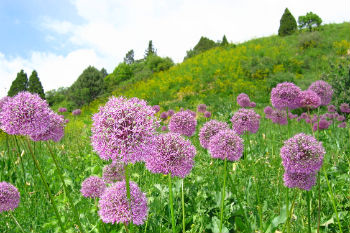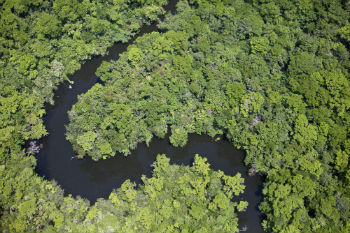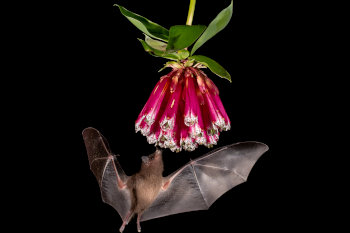Main menu
CEPF is a joint initiative of l’Agence Française de Développement, Conservation International, the European Union, Fondation Hans Wilsdorf, the Global Environment Facility, the Government of Canada, the Government of Japan and the World Bank. A fundamental goal is to ensure civil society is engaged in biodiversity conservation.
Visitez le site français コア情報の日本語翻訳を読むOr use Google Translate to translate the English site to your language:
GTranslate
How to Prevent Pandemics? Invest in Biodiversity
A message from CEPF's Donor Council Chairperson
By: Julia Marton-Lefèvre, CEPF Donor Chairperson
25 May 2021
25 May 2021
This message first appeared in the CEPF 2020 Annual Report.
Governments and other entities around the globe have spent a lot of time, money and energy addressing the health and economic consequences of the COVID-19 pandemic and coming up with medical and economic solutions. These actions are necessary, as so many people’s lives and livelihoods have been lost or are gravely threatened.
Applying a similar sense of urgency, the world’s leaders would be wise to also direct more attention and resources to the root cause of the emergence of zoonotic pandemics: human disturbance of nature.
Unsustainable exploitation of the environment—through land-use change, agricultural expansion and intensification, wildlife trade and consumption, and other drivers—is the source of almost all pandemics, according to a 2020 report from a gathering of experts on biodiversity and pandemics convened by the Intergovernmental Science-Policy Platform on Biodiversity and Ecosystem Services (IPBES).
The resulting costs are astounding. First, of course, is the human toll— 1.9 million deaths from COVID-19 alone as of January 2021. Many more have suffered serious illness and lasting symptoms. The monetary cost of the current pandemic also grows daily. By July 2020, the costs were estimated at US$8 trillion to US$16 trillion globally, according to the IPBES report, costs that have surely climbed exponentially since then.
"Unsustainable exploitation of the environment ... is the source of almost all pandemics." Julie Marton Lefèvre
The IPBES report estimates a markedly lower cost of US$22 billion to US$31.2 billion for the implementation of global strategies to prevent pandemics. These strategies include reducing wildlife trade and land-use change and increasing surveillance of human, animal and environmental health via the One Health multiple-sector initiative.
There is already action on many of these fronts. Organizations around the globe have long worked to halt wildlife trafficking and encouraged governments and communities to sustainably manage natural areas and conserve crucial habitats.
Recently, a coalition of public health and environmental organizations—including CEPF founding donor Conservation International and CEPF conservation partners World Resources Institute and Wildlife Conservation Society—formed Preventing Pandemics at the Source to apply a more holistic approach to the pandemic threat, pursuing policies, awareness and funding for preventative action.
The global community is, however, still falling short when it comes to allocating the resources required for these types of practical actions to be taken well before a crisis such as the current pandemic.
CEPF’s grantees and other civil society organizations continue their efforts to conserve the world’s biodiversity and prevent the environmental conditions that enable zoonotic diseases. They have proven methods for protecting and restoring habitats that provide a buffer between humans and wild animals and offer other vital services such as fresh water, clean air and food.
Many organizations are collaborating with governments to thwart the dangerous and often illegal trade in wild animals. These groups are among the heroes in the struggle against pandemics.
For a relatively low cost, the international community can empower these champions of a healthy world by significantly increasing the resources devoted to conserving biodiversity. With appropriate levels of funding, the return on investment for the global community includes fewer pandemics, healthier water, richer soils, climate regulation and much more—it’s an incredible bargain.






